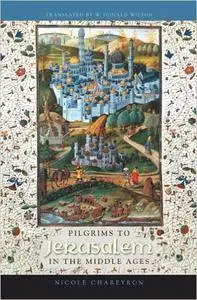Nicole Chareyon, "Pilgrims to Jerusalem in the Middle Ages"
English | ISBN: 0231132301 | 2005 | 288 pages | PDF | 2 MB
English | ISBN: 0231132301 | 2005 | 288 pages | PDF | 2 MB
"Every man who undertakes the journey to the Our Lord's Sepulcher needs three sacks: a sack of patience, a sack of silver, and a sack of faith."-Symon Semeonis, an Irish medieval pilgrim As medieval pilgrims made their way to the places where Jesus Christ lived and suffered, they experienced, among other things: holy sites, the majesty of the Egyptian pyramids (often referred to as the "Pharaoh's granaries"), dips in the Dead Sea, unfamiliar desert landscapes, the perils of traveling along the Nile, the customs of their Muslim hosts, Barbary pirates, lice, inconsiderate traveling companions, and a variety of difficulties, both great and small. In this richly detailed study, Nicole Chareyron draws on more than one hundred firsthand accounts to consider the journeys and worldviews of medieval pilgrims. Her work brings the reader into vivid, intimate contact with the pilgrims' thoughts and emotions as they made the frequently difficult pilgrimage to the Holy Land and back home again. Unlike the knights, princes, and soldiers of the Crusades, who traveled to the Holy Land for the purpose of reclaiming it for Christendom, these subsequent pilgrims of various nationalities, professions, and social classes were motivated by both religious piety and personal curiosity. The travelers not only wrote journals and memoirs for themselves but also to convey to others the majesty and strangeness of distant lands. In their accounts, the pilgrims relate their sense of astonishment, pity, admiration, and disappointment with humor and a touching sincerity and honesty. These writings also reveal the complex interactions between Christians, Jews, and Muslims in the Holy Land. Throughout their journey, pilgrims confronted occasionally hostile Muslim administrators (who controlled access to many holy sites), Bedouin tribes, Jews, and Turks. Chareyron considers the pilgrims' conflicted, frequently simplistic, views of their Muslim hosts and their social and religious practices.



